A softly waving mat of bright green tendrils is a soothing and beautiful sight in a reef aquarium. That is just the look and feel provided by green star polyps (GSPs).
These soft corals are not only pleasing to behold, but they are also fast-growing, hardy, and amazingly easy to propagate.
Once you park this coral in the right spot in your tank, little additional care is required aside from maintaining water quality, and they are even a little forgiving in that department.
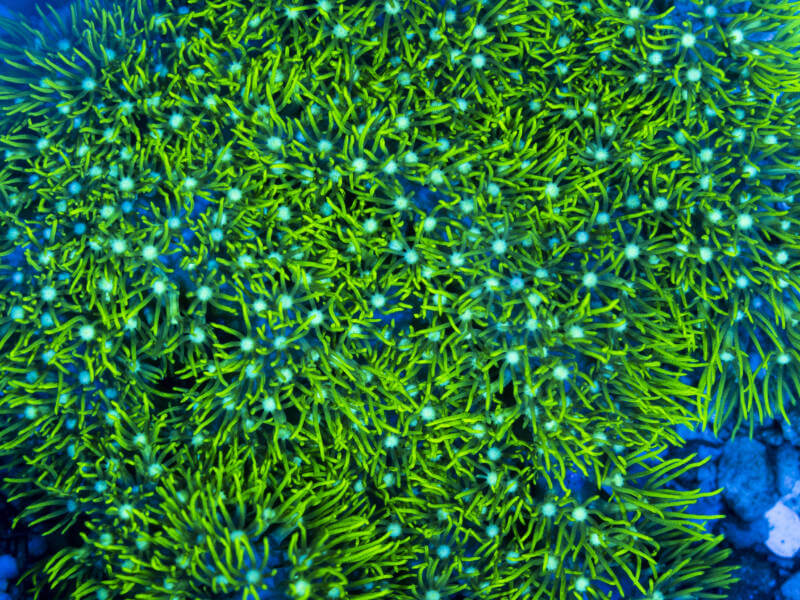
Keep reading to learn about tank setup and care of these tiny invertebrates that are sure to bring a big “wow-factor” to your tank.
[toc]
ID & Appearance
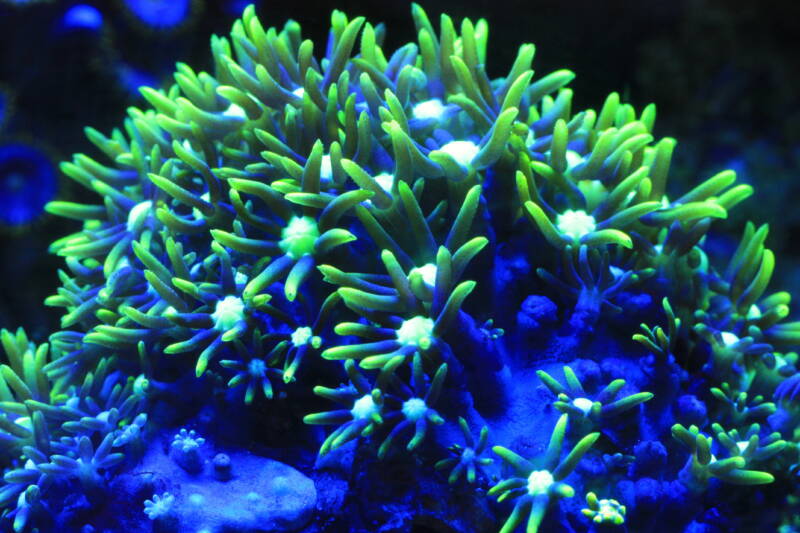
GPSs have the scientific name (Pachyclavularia violacea), but you will also see them listed as starburst polyps or daisy polyps.
Each individual polyp has eight delicate, thin green tentacles that come in a range of shades from dark green to neon to almost yellow.
At the center of each group of tentacles is a contrasting, usually white-colored area where the mouth of the coral is, giving it the “daisy” resemblance.
These polyps are around 0.5 inches (1.3 cm) in diameter and an inch to 1.5 inches (2.5 to 3.8 cm) in height.
They grow from a common colony base, sometimes called a stolon. This rubbery, mat-like base is a purple or reddish hue and spreads horizontally.
Do green star polyps close at night?
Yes, the individual polyps can completely retract into the stolon when disturbed or when the tank lights are off at night.
Habitat
These corals favor the waters of shallow reefs and lagoons in the Indo-Pacific region, where the water flow is moderate to high, and the lighting is intense.
Care
Green star polyps are excellent beginner corals. This hardy species is easy to care for and does not require special equipment, lighting, or food.
The most important things are to ensure proper water parameters, keep the lighting and water flow rates moderate, and consider the suitability of the coral’s placement.
How long does it take for GSP to open in a new tank?
Everyone wants their polyps to open quickly after being placed in the tank, but it can take a few days for them to acclimate.
Check to make sure other species in the tank, such as fish or co-located invertebrates, are not disturbing your polyps.
Finally, if your polyps do not open after a few days, they may have suffered during transport, and you should contact your provider.
Water Parameters
The GSP is a hardy species that tolerates a range of water conditions. Incredibly, it is even able to live without water for a few days!
Do not assume that ability means you can ignore water maintenance. After all, stability in water parameters is key to the health of your corals.
Maintain the following water parameters for your green star polyps:
| Temperature: | 72-82°F (22-27.7°C) |
| Hardness: | 8 to 12 dKH |
| pH: | 8.2-8.4 |
| Specific gravity: | 1.023 to 1.025 |
| Calcium: | 400 to 500 ppm |
| Magnesium: | 1250 to 1350 ppm |
| Ammonia: | 0 ppm |
Tank Size
These corals can adjust to any tank size available. The absolute minimum is five gallons (19 l); however, be aware that this fast-growing species may quickly outgrow such a setup.
Placement
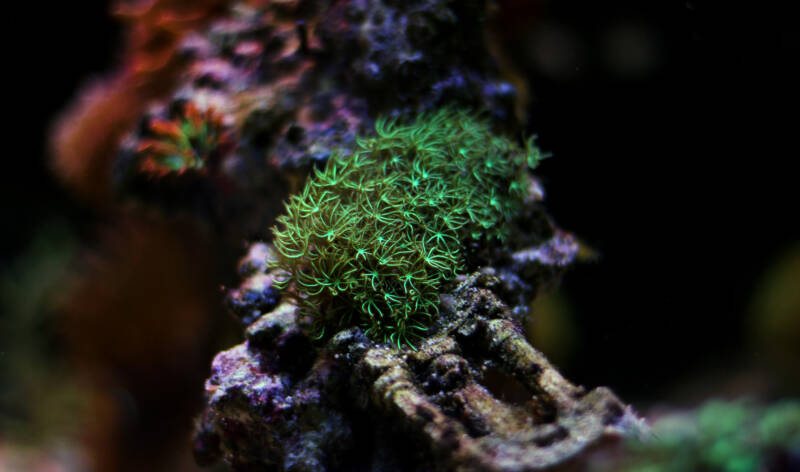
The great thing about GSPs is that they can be placed in various locations in a reef aquarium. In fact, they should do well with any placement that has moderate lighting and water flow.
Be careful not to place them too close to other corals. While the GSPs are not aggressive, their rapid growth may overtake their neighbors.
Water Movement
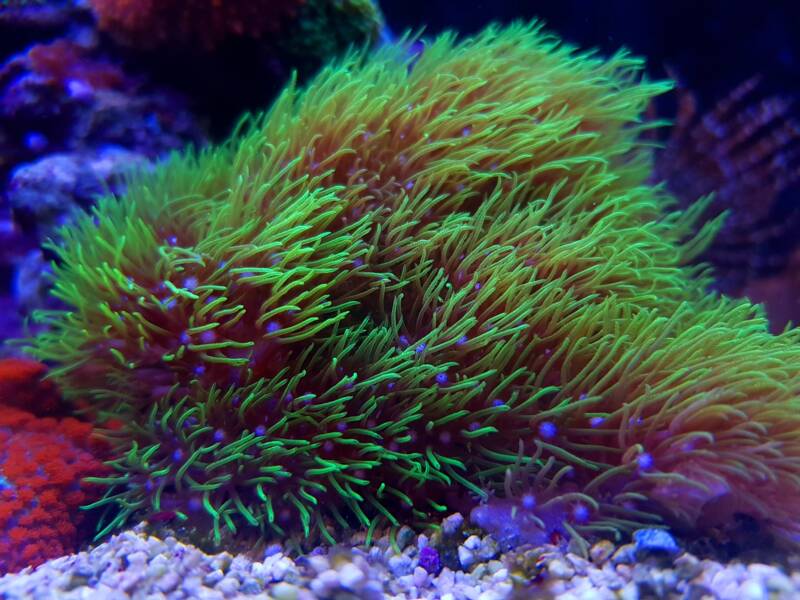
Remember that these corals come from areas of slightly higher water movement. Keep the water flow moderate to high in your reef aquarium to best suit your GSP.
The high flow rate will bring foods past your polyps while preventing debris from settling on them. It will also limit the growth of algae on the stolon.
Lighting
The best lighting for GSP is moderate to strong. LED lighting works well, and the addition of actinic lighting can not only benefit your corals’ growth but it also accentuates their green color.
Finally, adequate lighting is necessary to fuel the photosynthesis done by the symbiotic zooxanthellae, which provide nutrients to the GSP and vice versa.
Tank Mates
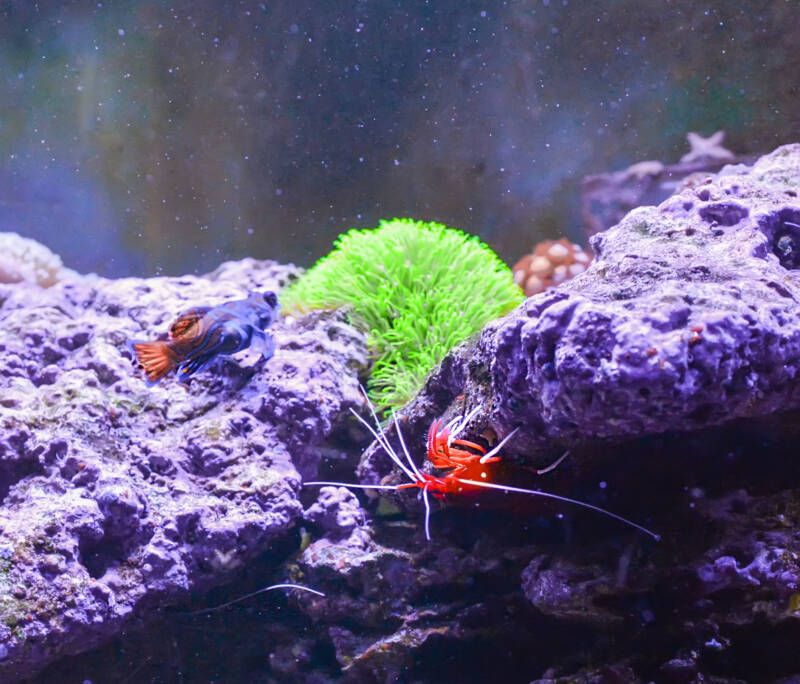
These easy-going corals can live in a tank with any number of reef-safe species. Some favorite fish to pair with GSPs are clownfish, blennies, and gobies.
Avoid polyp nibbling fish, such as puffers, trigger fish, and butterfly fish, as well as peppermint shrimp.
Some species of angelfish, damselfish, and starfish will work, just investigate the behaviors of the specific species to ensure they will not damage your polyps.
You can house your GSP with other corals and purple live rock, but make sure that they are not co-located in the tank as the green stars will quickly grow over the others if they are in contact.

Do not place your GSPs close to aggressive corals like Favia spp., Goniopora spp., Acropora spp., Euphillia spp., which may repeatedly sting your GSPs, causing them to remain retracted.
If you are looking for a compatible coral, consider pairing with Xenia – one of the few which will resist GSP’s growth rate.
Feeding
Not only is this coral hardy and easy to care for, but it is also easy to feed. Most of its nutrients come from its symbiotic relationship with the tiny zooxanthellae.
These single-celled organisms churn away, producing food for the coral through photosynthesis in exchange for a protected environment and nutrients needed for photosynthesis.
If you feed your fish regularly and well, then your GSPs will filter other nutrients from the water column.
There is little need to spot feed unless your coral is new or your tank is not mature. In these cases, you can give your polyps coral food a few times each week to encourage growth.
Propagation and Fragging
Green star polyps spread by “encrusting” growth, which means this coral will grow onto, or encrust, any surface it contacts. This includes rocks, decorations in the tank, other corals, and even the aquarium glass.
You may find yourself frequently needing to trim back the colony to prevent it from overtaking the tank.
The coral can be fragmented easily. Set a rock next to the colony and allow it to encrust the rock.
Using a scalpel, knife, or scissors, cut the rubbery mat portion and place the cutting in a separate frag tank to grow until it is established.
Growth Rate
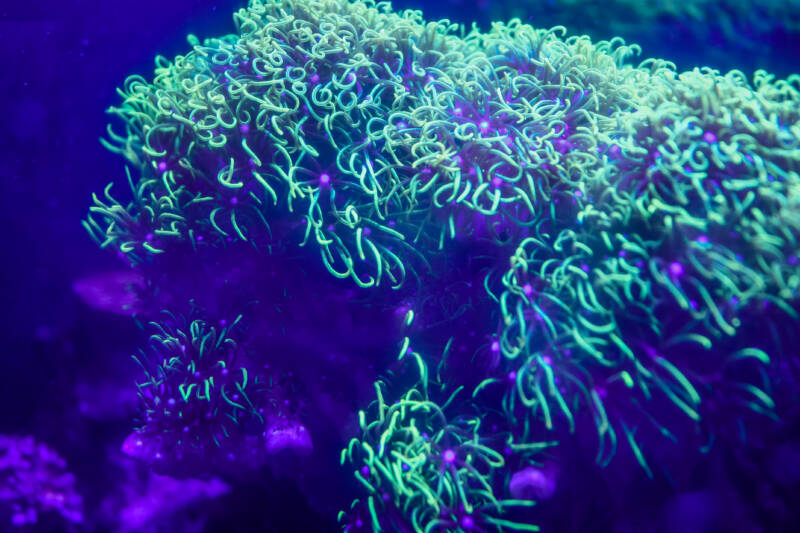
Because of the fast growth rate of green star polyps, make sure there is a barrier of some type between the colony and anything you do not wish to have your corals grow over.
Well maintained and fed GSP can spread up to an inch or two (2.5 to 5 cm) each month.
Fragment the colony or trim any mat extensions as needed to control growth.
Closing Thoughts
The green star polyp is our top choice for a beginner’s soft coral. You cannot do better than this hardy, easy to feed, fragment, and absolutely gorgeous specimen.
Add in their gentle personality and ability to pair with many other reef-safe species, and you everything you need for a great-looking, peaceful reef aquarium.
Do you have green star polyps in your tank?
Where in the tank do you find they grow best?

